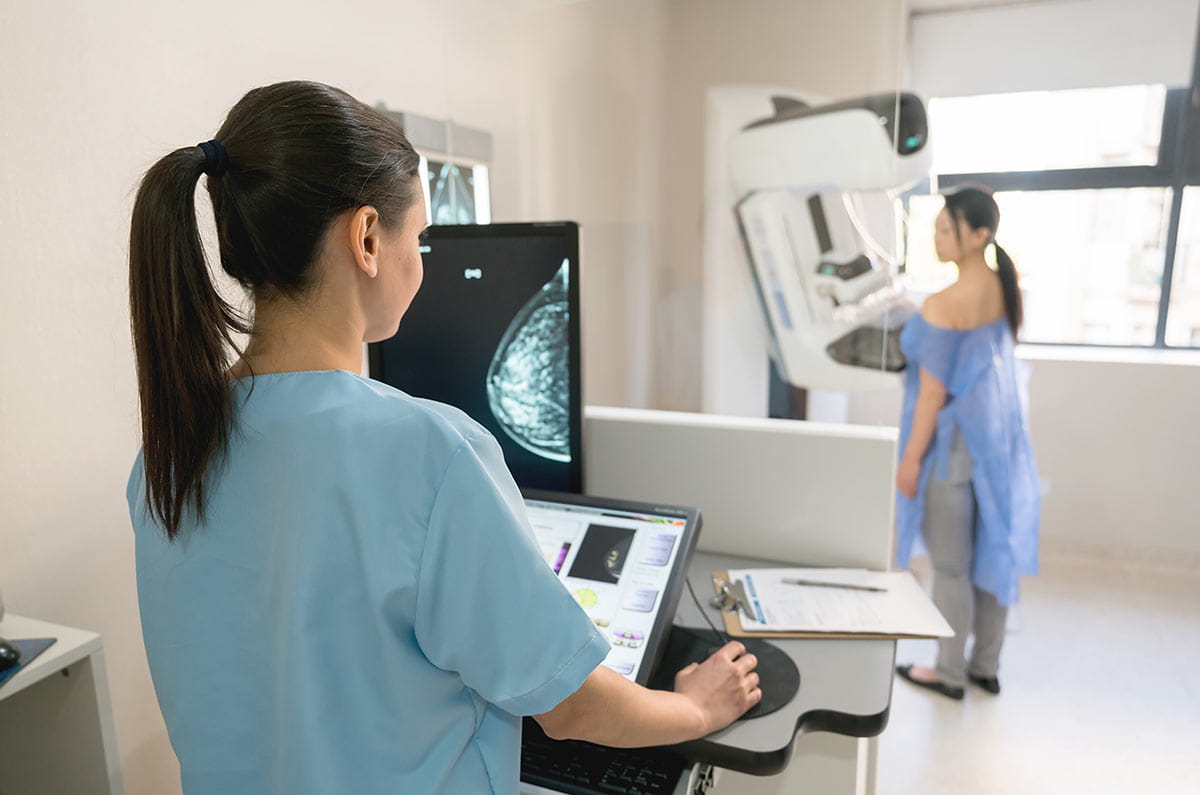What It Means for Your Health If You Have Dense Breasts
July 01, 2018

Did your last mammogram report say you have dense breasts? It’s more common than you think. Almost half of all women who get mammograms are found to have dense breasts, and although having dense breast tissue is normal, many women don’t know what it means or the health implications it may have.
Understanding Dense Breast Tissue
Breast density describes the different kinds of tissue that show on your mammogram. Your breasts are made of fat, connective tissue, and milk ducts and lobules that together are called glandular tissue.
Dense breasts have higher amounts of glandular and connective tissue and lower amounts of fatty tissue. Breast density matters because women with dense breasts have a higher risk for breast cancer than women with fatty breasts.
The radiologist who reviews your mammogram will classify your breast tissue according to these four groups, says Holly Marshall, MD, Division Chief of Breast Imaging at University Hospitals Cleveland Medical Center:
- Almost all fat (about 10 percent of women)
- Some dense areas: scattered areas of dense glandular and connective tissue (about 40 percent of women)
- Many dense areas: numerous areas of glandular and connective tissue (about 40 percent of women)
- Lots of dense areas: almost all glandular and connective tissue and little fat (about 10 percent of women)
Dense breasts fall into groups 3 and 4. Dense areas look white in a mammogram, the same color as cancer. Dense tissue can make it more challenging for doctors to find breast cancer.
“Dense tissue may hide breast cancer,” Dr. Marshall says. “After a mammogram, everyone receives a results letter, which will also tell you if you have dense breast tissue.”
Should You Have Additional Tests?
If you have dense breasts, speak with your doctor about your risk factors for breast cancer and whether you should have more screening tests, such as 3-D mammography, a breast ultrasound or a magnetic resonance imaging (MRI) exam. Currently, there are no screening recommendations beyond mammography alone for dense breast tissue cancer detection. However, additional screening may find cancers missed with mammography.
UH now offers the 10-minute Fast Breast MRI. Though Fast Breast MRI is not yet covered by insurance and is a self-pay option ($250), it detects three times the cancers compared to mammograms. “It’s a game changer in the fight against breast cancer because it finds the most cancers,” Dr. Marshall says.
UH encourages all women beginning at age 40 to get an annual mammogram screening, and know their breasts through regular self-exams and their family history.
“Regular screening is key to catching breast cancer early,” Dr. Marshall says. “You also can reduce your cancer risk by maintaining a healthy body weight, getting enough exercise and limiting alcoholic drinks.”
Related links
If you have dense breast tissue, speak with your physician to see if a Fast Breast MRI makes sense for you. For more information on Fast Breast MRI, call 216-924-3855 or visit UHhospitals.org/FastMRI.


